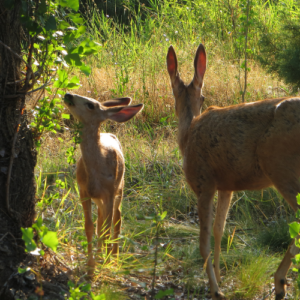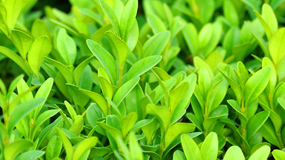Deer-Resistant Hedging: How to Protect Your Garden from Hungry Wildlife
Deer-Resistant Hedging: How to Protect Your Garden from Hungry Wildlife
If you live in a rural area, you’ll know that deer, while beautiful to watch, can cause real damage to your garden. One of the most effective and natural ways to protect your space is by planting deer-resistant hedging. In this post, we’ll explore some of the best hedge plants that deter deer and share tips on how to plant and maintain them.
Why Choose Deer-Resistant Hedges?
Deer are known to browse on young shoots and foliage, often leaving hedges stripped and damaged. By choosing plants that deer naturally avoid, you can:
- Protect your garden investment
- Create a natural, attractive barrier without unsightly fencing
- Maintain privacy and greenery throughout the year
The Best Deer-Resistant Hedging Plants
Here are some of the top hedge plants that are naturally less appealing to deer:
Box (Buxus sempervirens)
Box is a classic choice for low, formal hedging. Its dense, evergreen foliage forms neat shapes and borders. Due to its tough, leathery leaves, deer tend to avoid box.
Key benefits:
- Compact evergreen foliage
- Excellent for formal garden designs
- Easy to shape and maintain
Yew (Taxus baccata)
Yew is a traditional evergreen hedge that provides excellent privacy. Known for its dense foliage, Yew is toxic to deer, making it an effective barrier. It can be trimmed into neat shapes or left more natural.
Key benefits:
- Dense, long-lasting evergreen
- Excellent for privacy
- Suitable for both formal and informal gardens
Holly (Ilex aquifolium)
Holly offers a natural deterrent against deer with its glossy, spiky leaves. As an added bonus, Holly produces bright red berries in winter, making it a beautiful addition to any garden.
Key benefits:
- Evergreen with spiky leaves for protection
- Wildlife-friendly, attracting birds
- Adds seasonal interest
Lavender (Lavandula angustifolia) — for low hedging
Lavender may not be a traditional hedge, but it’s excellent for low borders. Its strong scent makes it unappealing to deer while attracting pollinators like bees and butterflies.
Key benefits:
- Fragrant and attractive flowers
- Deer-resistant due to strong scent
- Ideal for low, informal edging
Berberis (Barberry)
Berberis is a tough, thorny shrub that forms a dense, spiky hedge. Deer tend to avoid Berberis due to its sharp thorns, and it offers colourful berries in the autumn.
Key benefits:
- Thorny, dense growth for protection
- Bright seasonal berries
- Low-maintenance and hardy
Tips for Making Your Hedge More Deer-Resistant
Even with deer-resistant species, taking extra precautions can enhance protection:
- Plant densely to prevent gaps where deer can squeeze through.
- Mix hedge varieties, combining thorny and unpalatable plants for added deterrence.
- Protect young plants with temporary fencing or netting until they are well-established.
- Add strong-scented companion plants like rosemary or sage to strengthen the barrier.
When to Plant Deer-Resistant Hedges
The best time to plant hedging is typically autumn or early spring when the soil is workable and moist. This gives roots time to establish before extreme temperatures set in.
Read our complete hedge planting guide.
Final Thoughts
Choosing deer-resistant hedging is a smart and attractive way to protect your garden. Whether you’re aiming for a formal evergreen look or a mixed, wildlife-friendly hedge, deer will naturally avoid plenty of options.
If you’re unsure which hedge is right for your space, contact our team for expert advice. You can also browse our full range of hedging plants here.



